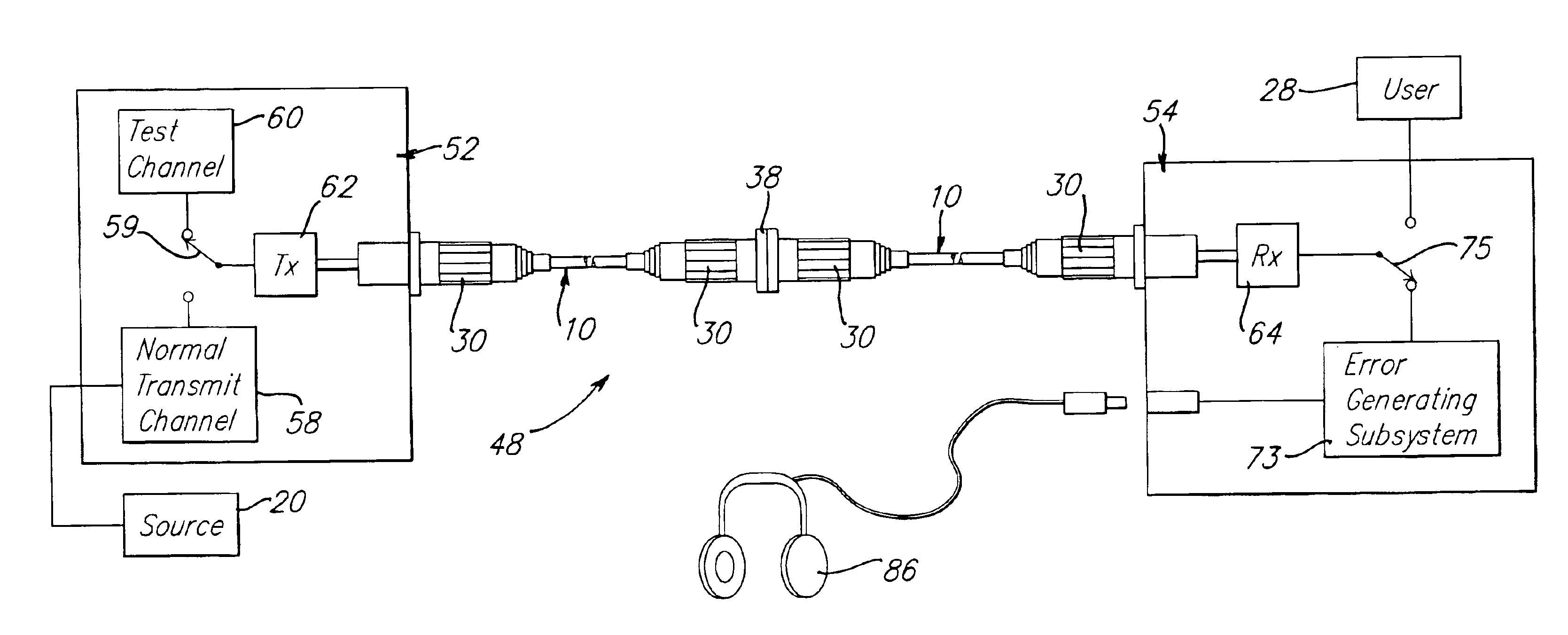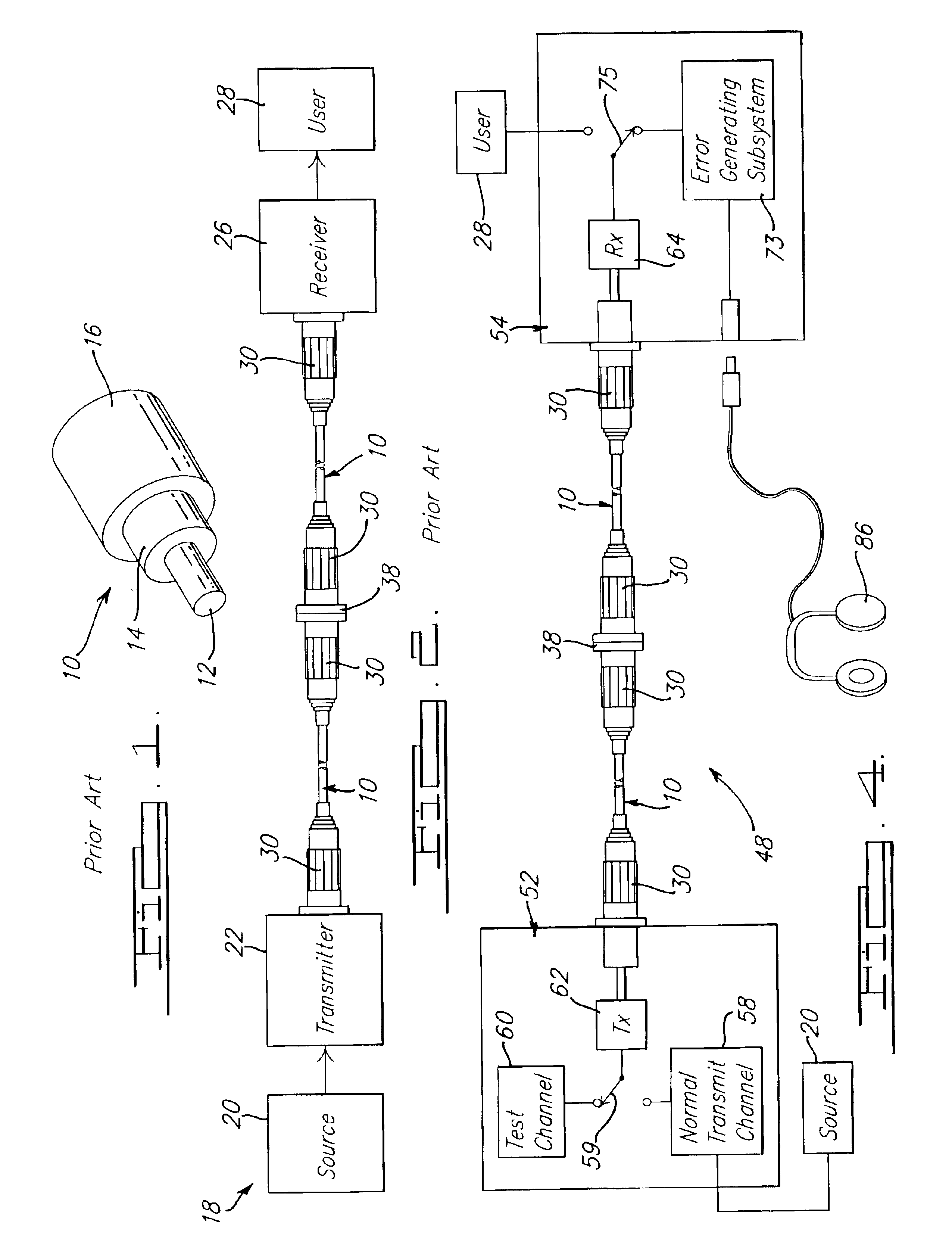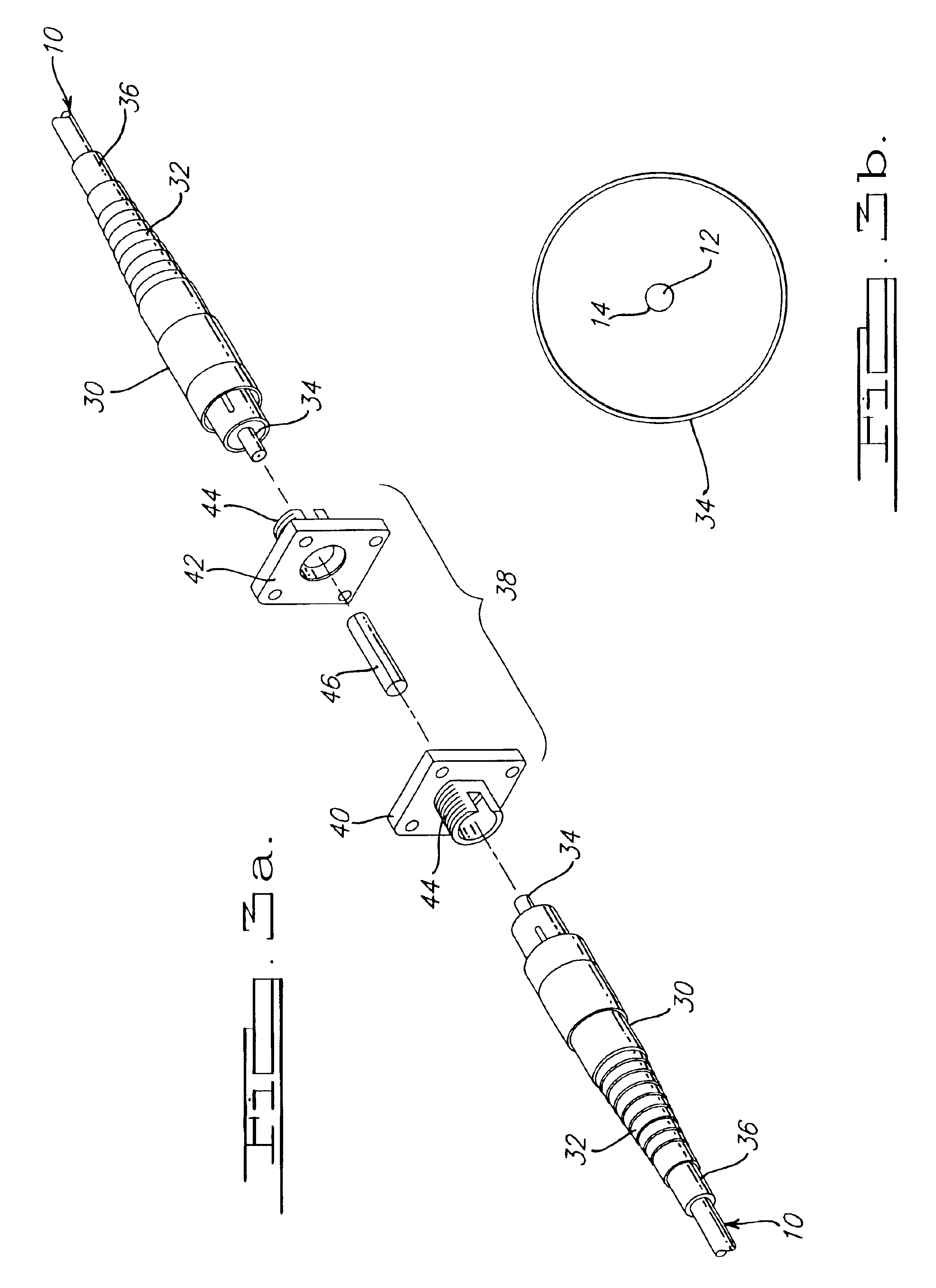Method for audibly measuring optical efficiency in an installed fiber optic link
a fiber optic link and optical transmission technology, applied in the field of fiber optics, can solve the problems of unsuitable laboratory use, cable b>10/b> damage, and inability to meet the requirements of laboratory use, and achieve optimal transmission efficiency, optical connection optimization, and optical transmission efficiency.
- Summary
- Abstract
- Description
- Claims
- Application Information
AI Technical Summary
Benefits of technology
Problems solved by technology
Method used
Image
Examples
Embodiment Construction
The following description of the preferred embodiment is merely exemplary in nature and is in no way intended to limit the invention, its application, or uses.
The present invention, in one preferred embodiment, relates to a data link 48 as shown in FIG. 4. The data link 48 generally includes a source 20, a transmitter 52, and a receiver 54. A user 28 receives an output of the receiver 54. The transmitter 52 is generally comprised of a normal transmit channel 58, a test channel 60, and a fiber optic transmitter (e.g. laser or LED) 62. The receiver 54 is generally comprised of a fiber optic receiver 64 and an error generating subsystem 73.
The fiber optic cables 10 are connected by connectors 30 using any suitable method or device, such as housing 38 and alignment sleeve 46, in the conventional manner. The data link 48 provides analog signal measurement to enable the user 28 to audibly adjust the coupling of the optical cables 10 to maximize the efficiency of the coupling thereof. Whil...
PUM
 Login to View More
Login to View More Abstract
Description
Claims
Application Information
 Login to View More
Login to View More - R&D
- Intellectual Property
- Life Sciences
- Materials
- Tech Scout
- Unparalleled Data Quality
- Higher Quality Content
- 60% Fewer Hallucinations
Browse by: Latest US Patents, China's latest patents, Technical Efficacy Thesaurus, Application Domain, Technology Topic, Popular Technical Reports.
© 2025 PatSnap. All rights reserved.Legal|Privacy policy|Modern Slavery Act Transparency Statement|Sitemap|About US| Contact US: help@patsnap.com



